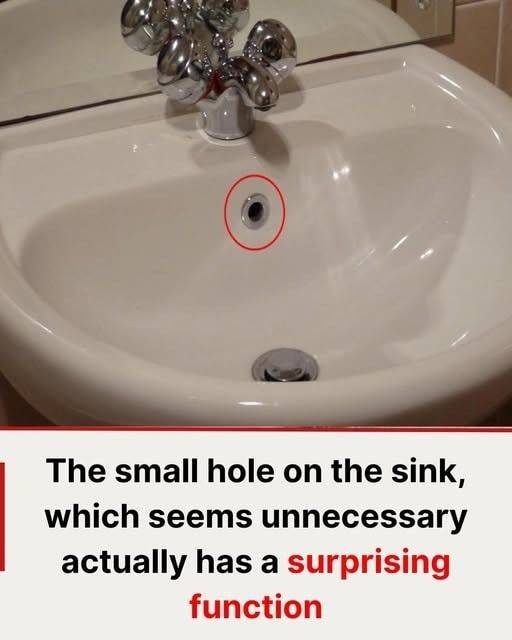In the midst of our daily routines, it’s easy to overlook the small features that make a big difference. One such feature is the overflow hole, a tiny opening located beneath the faucet in many bathroom and kitchen sinks. This unassuming hole plays a crucial role in maintaining the functionality, safety, and hygiene of your sink. Let’s delve into its purpose, importance, and maintenance to appreciate the significance of this often-overlooked feature.
The primary function of the overflow hole is to prevent water from spilling over the edge of the sink. It acts as a secondary drainage system, designed to kick in when water levels get too high. This clever design feature connects to the main drainage system via a small pipe, allowing excess water to flow directly into the drain instead of flooding your bathroom or kitchen.
In today’s fast-paced world, distractions are common, and it’s easy to get caught up in a phone call or multitask while filling the sink. If left unattended, the running water can quickly rise and overflow. The overflow hole serves as a backup, keeping the water contained within the sink and reducing the risk of flooding.
Beyond preventing overflow, the overflow hole plays a vital role in keeping your sink clean. When washing hands, dishes, or other items, water often splashes and can become stagnant in hard-to-reach areas. Stagnant water creates an ideal environment for bacteria, mold, and unpleasant odors. The overflow hole allows for better water circulation, reducing the chances of stagnant water buildup and promoting a cleaner, more sanitary sink environment.
To keep the overflow hole functioning properly, regular cleaning is essential. Over time, it can accumulate debris, soap scum, and bacteria, leading to blockages or foul odors. Using a small brush, pipe cleaner, or cotton swab, gently remove any visible dirt or buildup. Then, flush the overflow hole with boiling water to dissolve grease and grime.
If you notice an unpleasant smell coming from your sink, the overflow hole may be the culprit. A simple and natural way to eliminate odors is by using baking soda and vinegar. Pour one cup of baking soda into the overflow hole, followed by a cup of white vinegar. The fizzing reaction will break down any trapped organic material and neutralize odors.
To keep your sink functioning at its best, make sure to inspect the overflow hole regularly for blockages or buildup. A well-maintained overflow hole not only improves sink performance but also extends its lifespan. Neglecting this small but important feature can lead to water damage, unpleasant odors, and even potential plumbing issues.
Interestingly, the overflow hole is not a modern invention. Early sink designs featured similar mechanisms to prevent spills in communal washing areas. As plumbing systems advanced, the overflow hole became a standard feature in household sinks, proving that simple yet effective designs can stand the test of time.
Although it may seem insignificant, the overflow hole plays an essential role in keeping your sink functional, safe, and hygienic. By understanding its purpose and including simple maintenance steps in your routine, you can prevent water damage, reduce odors, and ensure that your sink remains in optimal condition. Next time you notice that tiny hole beneath your faucet, take a moment to appreciate it—it’s an unsung hero that quietly protects your home from unnecessary messes and damage.


